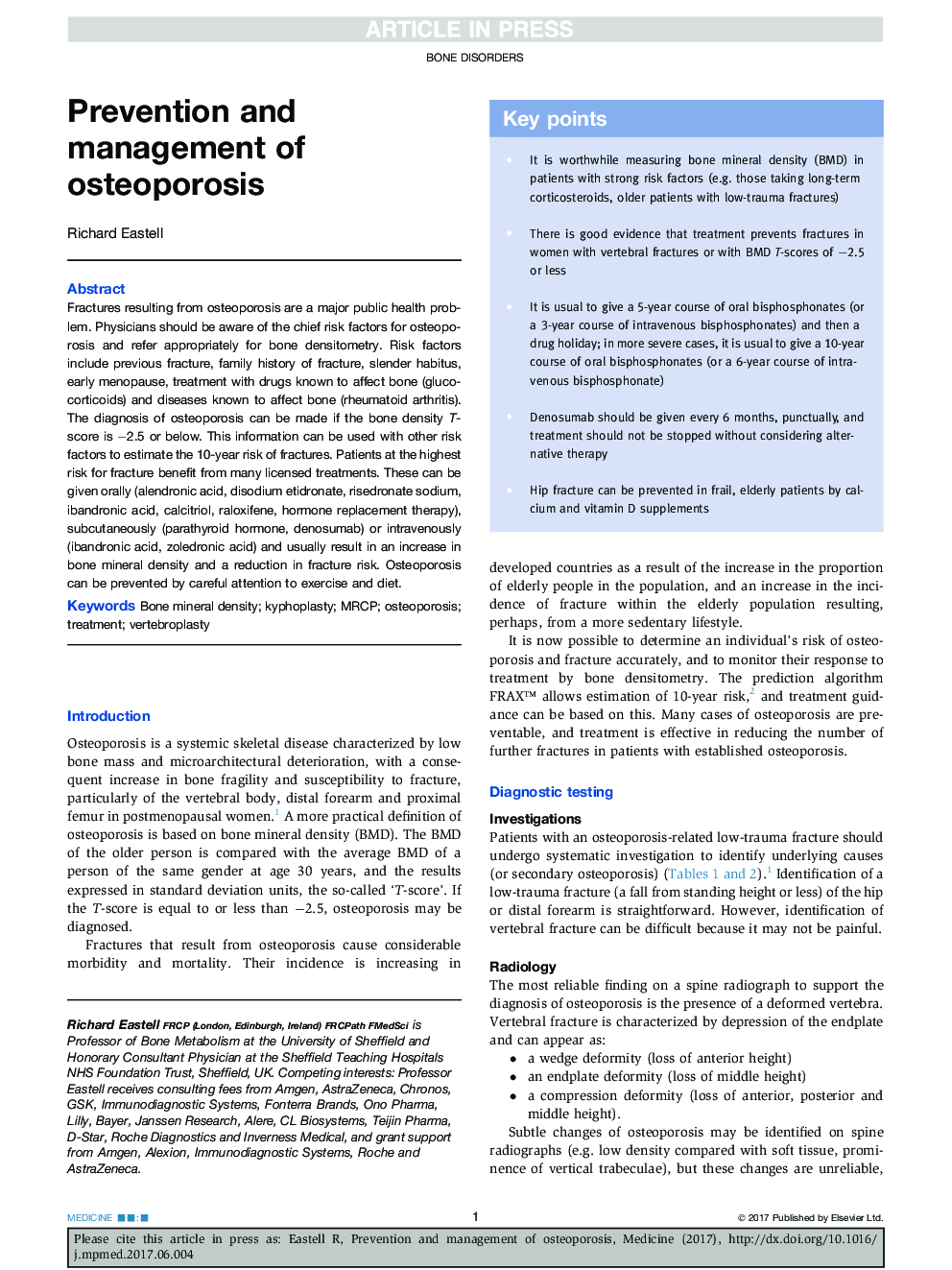| Article ID | Journal | Published Year | Pages | File Type |
|---|---|---|---|---|
| 5681162 | Medicine | 2017 | 5 Pages |
Abstract
Fractures resulting from osteoporosis are a major public health problem. Physicians should be aware of the chief risk factors for osteoporosis and refer appropriately for bone densitometry. Risk factors include previous fracture, family history of fracture, slender habitus, early menopause, treatment with drugs known to affect bone (glucocorticoids) and diseases known to affect bone (rheumatoid arthritis). The diagnosis of osteoporosis can be made if the bone density T-score is â2.5 or below. This information can be used with other risk factors to estimate the 10-year risk of fractures. Patients at the highest risk for fracture benefit from many licensed treatments. These can be given orally (alendronic acid, disodium etidronate, risedronate sodium, ibandronic acid, calcitriol, raloxifene, hormone replacement therapy), subcutaneously (parathyroid hormone, denosumab) or intravenously (ibandronic acid, zoledronic acid) and usually result in an increase in bone mineral density and a reduction in fracture risk. Osteoporosis can be prevented by careful attention to exercise and diet.
Related Topics
Health Sciences
Medicine and Dentistry
Medicine and Dentistry (General)
Authors
Richard Eastell,
